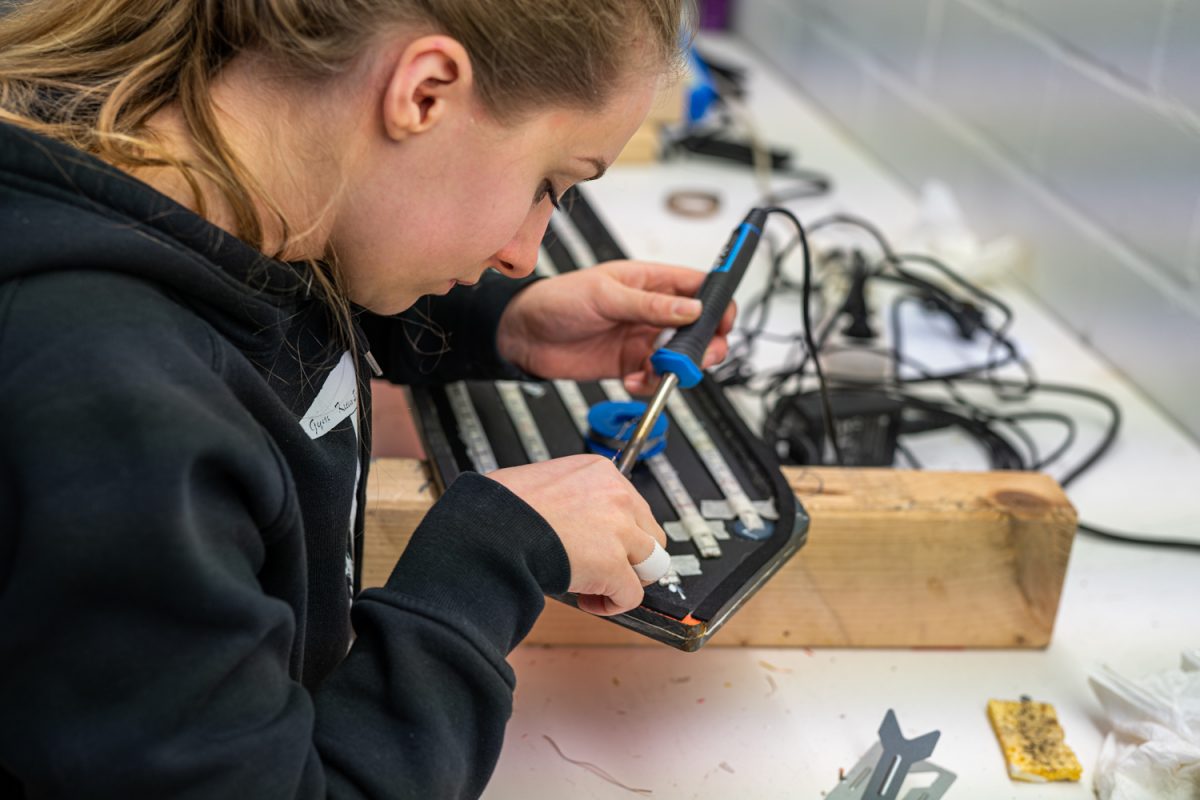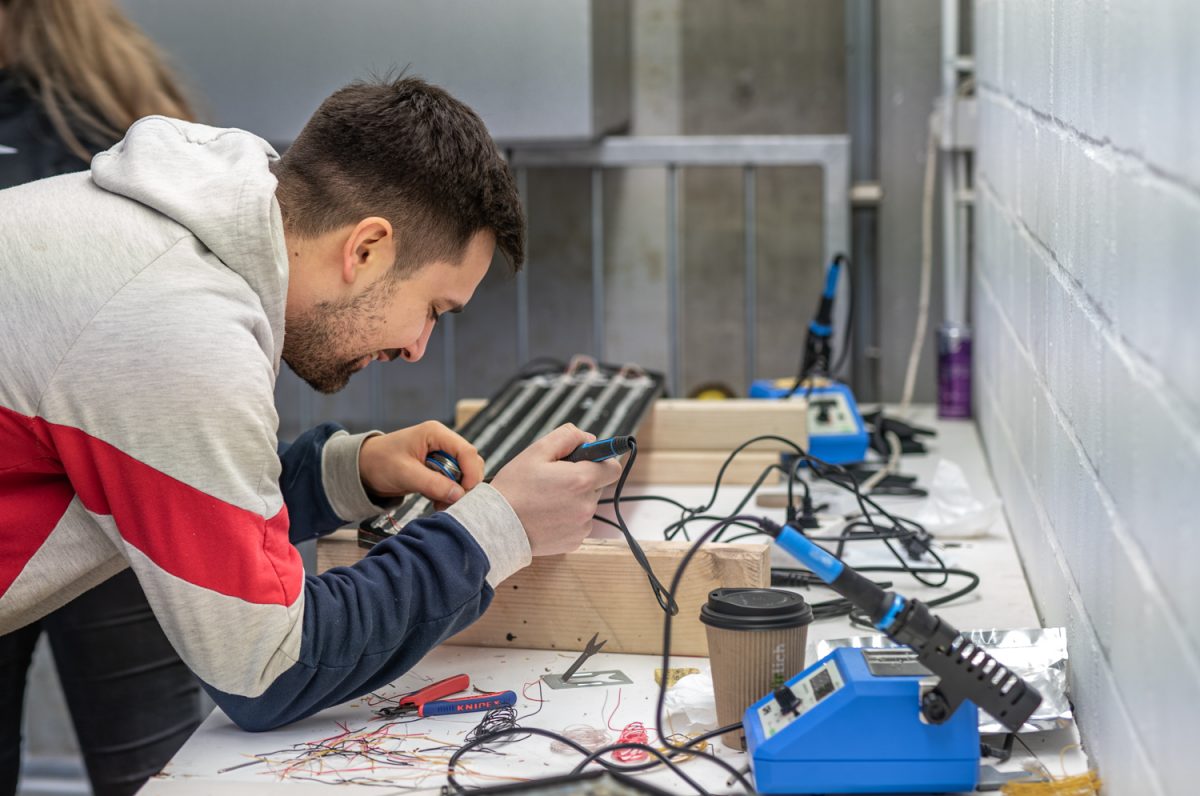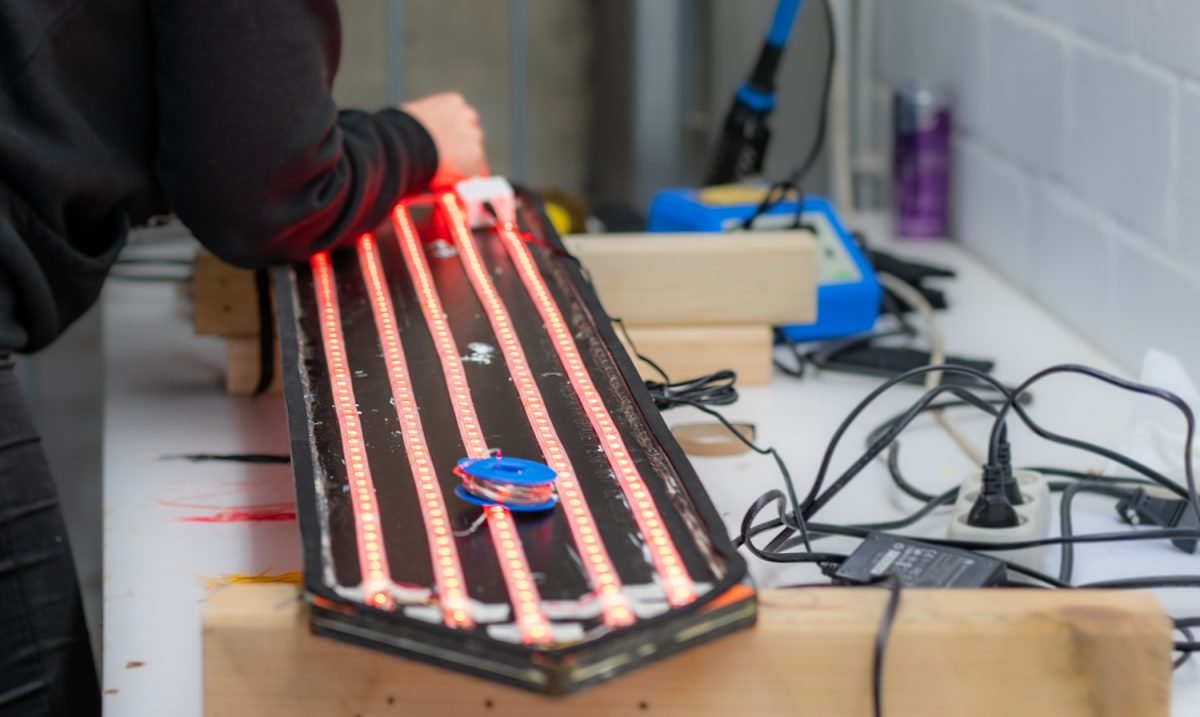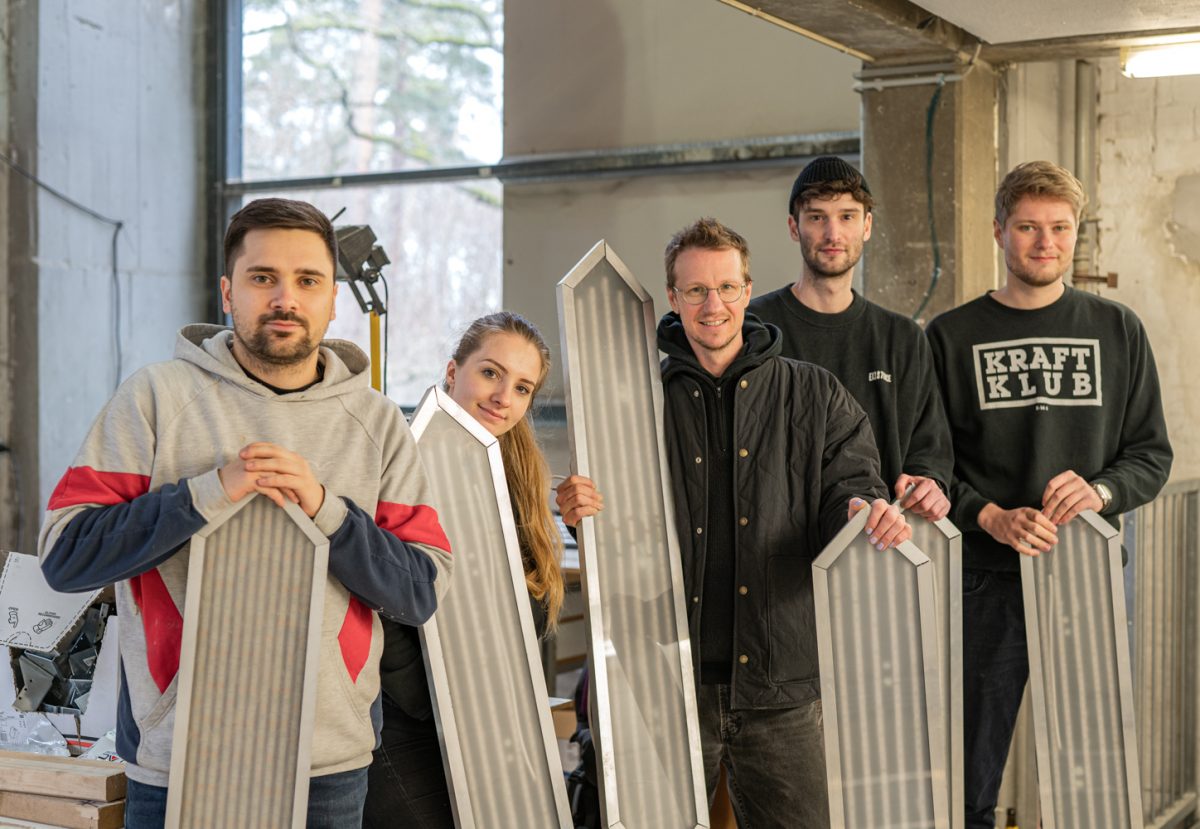Countdown for climate Students build a ClimateCrisisClock at the Institute for Architecture-Related Art
The clock is ticking. Only a few more years and global warming could exceed the critical 1.5 degree mark, making the effects of climate change irreversible. The countdown to this point will soon be shown by a ClimateCrisisClock on the Main Campus of TU Braunschweig. The ClimateCrisisClock is being built by Architecture students at the Institute for Architecture-related Art (IAK).
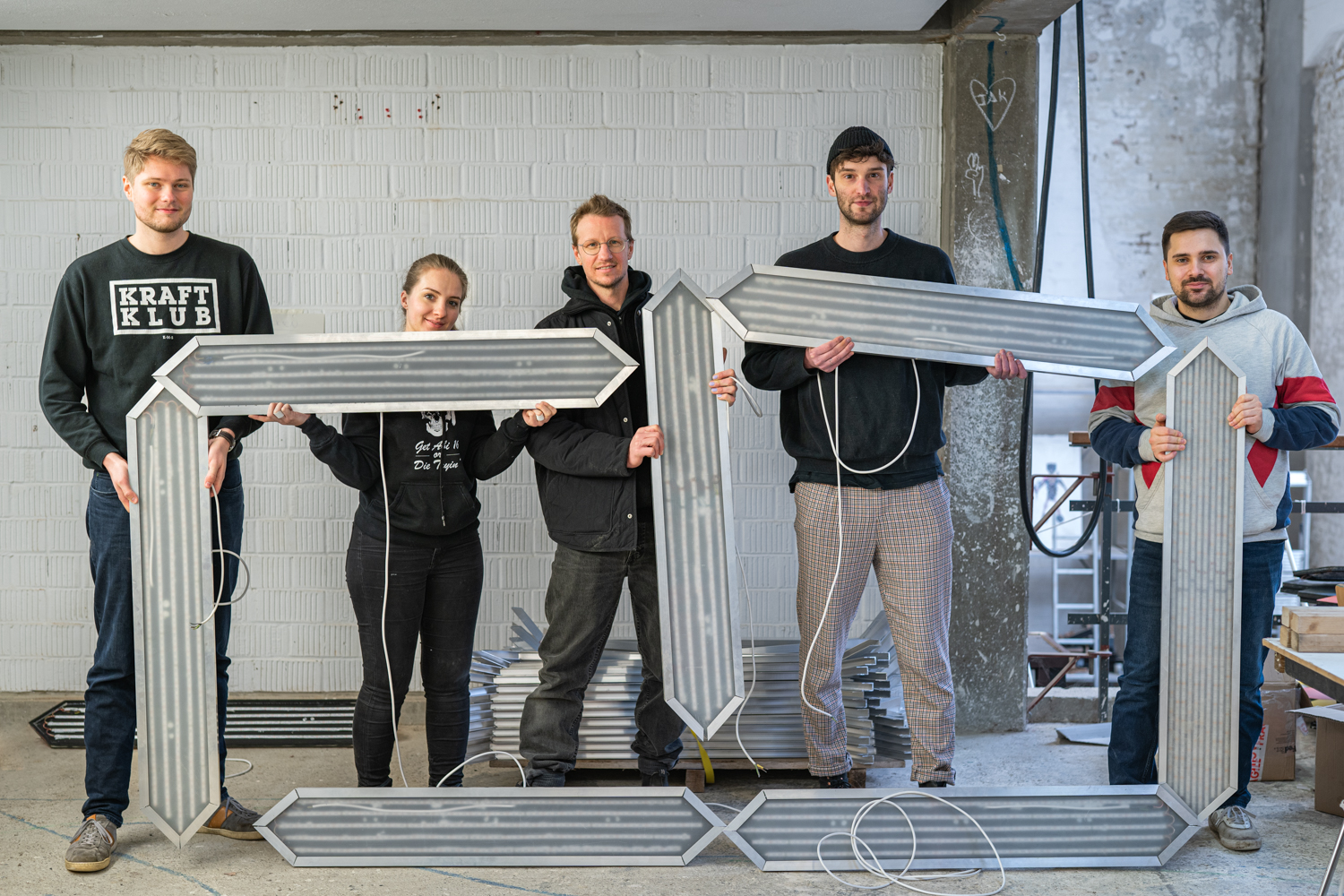
A first look at the digits with Theo Meerjanssen, Laura Ivanov, Benjamin Menzel, Thaddäus Wegener and Leander Nass (from left). Photo credit: Maddie Franke/TU Braunschweig
Ten large digits are being built here in Professor Folke Köbberling’s institute in Querumer Forst. The team is assembling the elements from material that has been donated in part, such as laminated pressboard. They glue long LED strips into the already finished numerals. Twice a week, students of Architecture and the student engineering office StudING meet to work on the clock. “The idea for this goes back to a student initiative,” says Benjamin Menzel, who is in charge of the project as an artistic assistant at the IAK. “It’s a synergy of different designs that we studied together.”
Impulses for this also came from the IAK’s semester theme “Time”: lifetime, clock time, corona time, tolerance time – and action time. “In order to tackle one of the greatest challenges of our time, such as climate change, one has to act respectively change one’s life. Many people still do not realise the dramatic nature of the time available for action. If we don’t change anything in the next few years, climate catastrophes – as we have experienced in the Ahr Valley – will be the order of the day, just like droughts and extremely hot summers,” Folke Köbberling emphasises. “The ClimateCrisisClock is therefore intended to be a CO2 memorial.”
Climate clocks worldwide
Around the world, climate or CO2 clocks are already drawing attention to the climate crisis. The CO2 clock of the Mercator Research Institute on Global Commons and Climate Change (MCC) illustrates on the website of the climate research institute how much carbon dioxide may be released into the atmosphere in order to limit global warming to a maximum of 1.5 degrees Celsius or 2 degrees Celsius. “We will also synchronise our ClimateCrisisClock with this clock,” says Kathrin Philipps, one of the initiators of the project.
Probably the most famous countdown has been hanging on New York’s “Metronome” since 2020, a work of art that originally displayed the current time on an atomic clock. After the sentence “The Earth has a deadline” appeared on the display, the numbers 7:103:15:40:07 followed, representing the years, days, hours, minutes and seconds until this deadline. Based on this project, climate clocks have since been created in numerous countries.
Glowing numbers on the Forum Building
The students’ ClimateCrisisClock also stands out: Each digit is about 2.50 metres high and 1.50 metres wide. To make them glow, they receive electricity generated by photovoltaic systems on TU Braunschweig campus. The clock is mounted on the Forum Building so that it can be easily seen around the University Square.
The ten digits show the time left until the CO2 concentration exceeds the 1.5 degree mark. The clock illustrates the speed with which we are moving towards this deadline. If the clock shows 0:000:00:00 one day, the CO2 budget would be used up and the consequences would probably be catastrophic.
The students are well on schedule with the construction of the clock. The ClimateCrisisClock should hang on the Forum Building on TUmorrow Day on 15 June. Theo Meerjanssen is already excited to see the clock in action. He has been involved in the project from the beginning: “And now I want to finish building it.“

